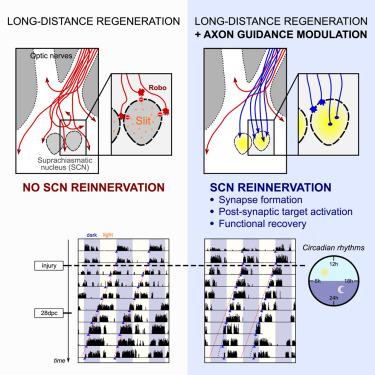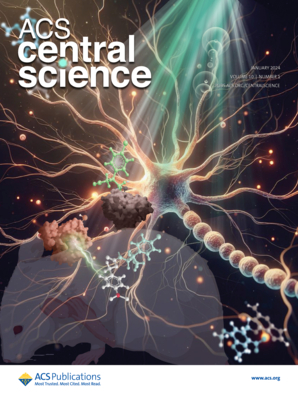Axon guidance during mouse central nervous system regeneration is required for specific brain innervation
IF 12.7
1区 化学
Q1 CHEMISTRY, MULTIDISCIPLINARY
引用次数: 0
Abstract
Reconstructing functional neuronal circuits is one major challenge of central nervous system repair. Through activation of pro-growth signaling pathways, some neurons achieve long-distance axon regrowth. Yet, functional reconnection has hardly been obtained, as these regenerating axons fail to resume their initial trajectory and reinnervate their proper target. Axon guidance is considered to be active only during development. Here, using the mouse visual system, we show that axon guidance is still active in the adult brain in regenerative conditions. We highlight that regenerating retinal ganglion cell axons avoid one of their primary targets, the suprachiasmatic nucleus (SCN), due to Slit/Robo repulsive signaling. Together with promoting regeneration, silencing Slit/Robo in vivo enables regenerating axons to enter the SCN and form active synapses. The newly formed circuit is associated with neuronal activation and functional recovery. Our results provide evidence that axon guidance mechanisms are required to reconnect regenerating axons to specific brain nuclei.

小鼠中枢神经系统再生过程中的轴突导向需要特定的脑神经支配
重建功能性神经元回路是中枢神经系统修复的一大挑战。通过激活促生长信号通路,一些神经元实现了长距离轴突生长。然而,由于这些再生轴突无法恢复其初始轨迹并重新支配适当的目标,因此很难实现功能性重新连接。轴突导向被认为只在发育过程中起作用。在这里,我们利用小鼠的视觉系统表明,轴突导向在再生条件下的成人大脑中仍然活跃。我们强调,再生的视网膜神经节细胞轴突会在 Slit/Robo 排斥信号的作用下避开其主要目标之一--视交叉上核(SCN)。在体内沉默 Slit/Robo 不仅能促进再生,还能使再生轴突进入 SCN 并形成活跃的突触。新形成的回路与神经元激活和功能恢复有关。我们的研究结果证明,轴突导向机制是再生轴突与特定脑核重新连接的必要条件。
本文章由计算机程序翻译,如有差异,请以英文原文为准。
求助全文
约1分钟内获得全文
求助全文
来源期刊

ACS Central Science
Chemical Engineering-General Chemical Engineering
CiteScore
25.50
自引率
0.50%
发文量
194
审稿时长
10 weeks
期刊介绍:
ACS Central Science publishes significant primary reports on research in chemistry and allied fields where chemical approaches are pivotal. As the first fully open-access journal by the American Chemical Society, it covers compelling and important contributions to the broad chemistry and scientific community. "Central science," a term popularized nearly 40 years ago, emphasizes chemistry's central role in connecting physical and life sciences, and fundamental sciences with applied disciplines like medicine and engineering. The journal focuses on exceptional quality articles, addressing advances in fundamental chemistry and interdisciplinary research.
 求助内容:
求助内容: 应助结果提醒方式:
应助结果提醒方式:


